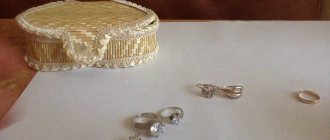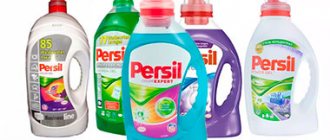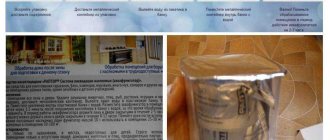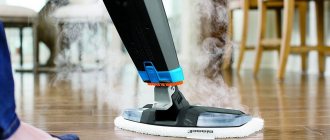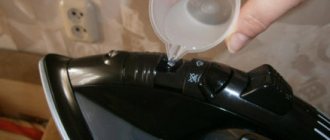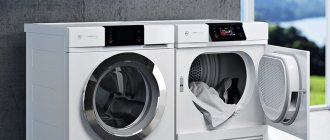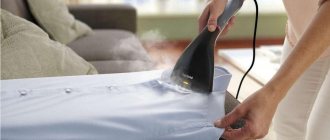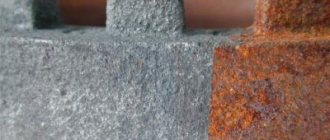An aerator is a plumbing device that is installed on the spouts of water taps and mixers to saturate the water with small air bubbles and mechanically clean it from foreign particles.
The principle of operation of the aerator is to pass water through several meshes with different cell sizes. Thanks to this, the water is saturated with air, feels soft and splashes less when washing dishes. While maintaining washing efficiency, the aerator saves up to 70% of water
.
How to clean a faucet aerator.
19 Feb 2012 |
Section: Miscellaneous Hello dear readers of the site sesaga.ru. This article, first of all, will be of interest to housewives, and will help those who do not know how to clean the faucet aerator .
Aerator
- This is a mesh filter located on the faucet spout and is designed to mix water with air, making it softer and more uniform.
It is no secret that tap water contains small solid particles of scale and metal oxides (rust), which over time are deposited on the mesh of the mixer aerator, clogging them. This usually happens after repair work has been carried out and the water supply has been turned off. And as a result, a stream of water from one turns into several, splashing all over the sink and beyond.
In such cases, it is necessary to clean the aerator grids from dirt, for which you need to unscrew the aerator head. For such purposes, it has edges so that it can be unscrewed with a wrench. But this must be done very carefully so as not to damage the nickel coating.
I usually unscrew it with pliers after wrapping the head in a dishcloth. You should unscrew it clockwise when looking at the tap from above. If the rubber gasket does not fall out, then it must be removed from the tap to assess its condition.
Next, by pressing your finger on the side of the water outlet from the head body, we squeeze out the cylinder with plastic filter meshes.
The next step is to remove the plastic double mesh filter for primary cleaning from the cylinder using the tip of a knife. Be careful not to cut yourself. It can also be removed using a thin flat-head screwdriver through a slot in the side. Whichever is more convenient for you.
When you have removed the mesh filter from the cylinder, separate the upper spherical mesh from it by prying it with the tip of a knife. You can see what's going on there.
Place the lower part of the filter under running water and use a needle or a thin awl to clean the holes from dirt. Do the same with the spherical part.
We still have a layer of metal mesh remaining in the lower part of the cylinder that has not been cleaned. They are squeezed out with your finger and also washed under running water. If there are still small particles left between them, then the meshes need to be separated from each other and washed separately.
When all the elements of the aerator are clean, they need to be assembled. I think you shouldn't have any problems assembling the aerator. If you still have questions, you can look through the article again. Just in case, here is the sequence of assembling the aerator.
When you install the aerator in place, place the rubber gasket on top and screw it together. You should tighten it counterclockwise when looking at the faucet from above.
Do not tighten it too much, it is enough if the aerator is tightened by hand. Open the water and if you see a leak from under the aerator head, then take some pliers, a washcloth and tighten it a little. As a rule, if the rubber gasket is in place, you will not need much effort to tighten it.
And if you need to disassemble the faucet or replace the cartridge in the faucet, read the article on how to disassemble the faucet and replace the cartridge. Good luck!
Methods for cleaning a nickel-plated or chrome-plated faucet
Such surfaces require careful care. They need to be thoroughly cleaned and disinfected. You can clean the faucet using the following products:
Dishwashing liquid. Take 1 glass of warm water and mix 1 tablespoon in it. detergent
Then take a sponge soaked in the prepared solution and carefully clean all parts of the structure
Please note: the spout, base, levers and valves of the faucet should be thoroughly cleaned.
Baking soda. To clean rust from a chrome bathroom faucet, you will need baking soda. Take a soft sponge and lightly dampen it with water, you can also use a cloth. Using them, spread the baking soda over the surface and leave it for 30 minutes. After this, the soda can be washed off with cool water.
White vinegar. Pour white vinegar (6%) into the spray bottle and spread it over the surface of the product; mineral deposits will begin to dissolve. Leave the vinegar drops on for 10 minutes. Then the mixer should be wiped with a dry cloth.
Design and principle of operation of the aerator
In most cases, aerators consist of three elements - a body, a rubber gasket and, of course, a “filter” system. The body can be made of plastic (cheap, but short-lived), pressed metal (the average option, which is also not particularly reliable, since it is susceptible to corrosion) or brass (the best option, it will serve for a long time and stably).
The main function of the faucet aerator is to limit the flow of water
When choosing a new faucet for your bathroom or kitchen, be sure to pay attention to the quality and method of fastening the aerator. Nozzles with internal and external threads are available for sale.
Water, passing through several meshes of the device, is mixed with air - the output is visually soft, with a milky tint (foamy) stream. Due to the fact that air is constantly mixed in the aerator, the pressure in the mixer seems to remain unchanged, despite the fact that the water flow rate decreases.
When washing your hands, dishes, washing your face, shaving, you won’t definitely feel the difference in the volume of “outgoing” water. But filling pots, sinks or bathtubs will now take twice as long.
In addition to reducing water consumption, the aerator also performs the following functions:
- improves (regulates) the quality of the jet. By uninstalling the aerator and opening the tap, you can see how the water flows randomly and what splashes fly in all directions;
- saturates water with oxygen and promotes the weathering of chlorine;
- purifies water from large particles.
Related article: Bathroom faucet
This is what a stream of water looks like without an aerator
And so - with an aerator
Common troubles
The single-lever faucet design has only three common problems.
| Malfunction | Circumstance |
| Handle jamming, enormous hardening during adjustment | Lubricant washout (in most cases occurs after 5-8 years of operation) |
| Broken rod (the handle is completely separated from the body) | Excessive hardening applied to the handle |
| Inability to shut off water, leaking when the handle is in the lower position | Chips of plates due to debris, breakage of plastic clips due to excessive hardening on the lever |
Let's highlight: the single-lever mixer closes, opens and is adjusted with smooth movement, without unnecessary hardening. The cause of most malfunctions is the habit of turning off the water with a sharp blow to the lever.
Sticking of the handle can be eliminated by re-lubricating the rubbing plates. A special lubricant for the mixer cartridge and ceramic axle boxes is sold in branded plumbing stores; the price of a small tube is 400 - 600 rubles. A more affordable option is silicone lubricants used for household purposes: a 30-gram tube will cost only 120 - 140 rubles.
In all other cases, the repair instructions boil down to replacing the cartridge completely.
Advantages and disadvantages of such a nozzle
The main advantages of using an aerator include:
- low price. The nozzle will cost you 2-10 dollars (depending on the design features);
- reducing the noise level during operation of plumbing fixtures. The water supplied along with the air does not make noise;
- ease of maintenance. The elementary design allows even a housewife to understand the intricacies of the device and operation of the nozzle;
- performs the function of a simple filter.
There is only one drawback - the fragility of the device. If your house has old pipes, you will have to change the aerators on the taps every six months to a year.
The aerator screens can be cleaned with a pin or needle.
Appearance
There is an inscription on the rim (I haven’t seen it in other reviews, but the value is low) ANSI -A112.18.1-2.0GPM/7.56LPM - MADE IN CHINA Here A112.18.1 is the American standard for “Plumbing equipment” 7.56LPM - liters per minute, capacity 2.0 GPM - gallons per minute, also in imperial units
The mesh is double and this, as was said, is the only metal part of the product. But the specifications said something else. And if you look at the pictures of the store, you can see how it once was, before the radical reduction in price - pay attention to the corrugation of the part connected to the faucet spout. The part is metal IMHO. Was once If you take the product apart, from left to right. Aerator with two positions. It turned out that it can be screwed directly to the tap using the supplied adapter. And have a more compact version, without changing the direction of the jet. The video shows around timecode 1:00 Hinge with O-ring You can see a thin silicone gasket on the thread. And yes, there is no leakage in this place. It leaks in something else :). see video. The main and spare gaskets (both do not fit, so a spare one). I didn’t see a spare one in other reviews, apparently, they all make similar ones in different places. And a threaded adapter. The top view reveals the puller slots on the adapter and the yellow part in the aerator. It also doesn't affect anything.
How to clean and replace the aerator?
If it is necessary to clean the aerator (and there will be such a need), work should be carried out in the following order:
- Uninstall the aerator by rotating it with your hand, a wrench and pliers clockwise - when looking at the faucet from above. If the rubber gasket does not fall out immediately, it must be removed and the condition assessed.
- By pressing your finger on the side where the jet exits the body, remove the cylinder with mesh.
- Having disassembled the cylinder into “spare parts” using a stream of water and a needle (toothpick, thin awl), clean its individual elements.
- When all parts of the aerator are cleaned, you can assemble it and install it in place. Don’t forget to put a gasket on top of the nozzle - in a word, screw it together (counterclockwise when viewed from above). You should not tighten the aerator too much - it will be quite enough if you just do it by hand. If, after opening the water, you see a leak, just take pliers and a napkin and tighten slightly.
As you can see, the process of cleaning the aerator does not contain any difficulties. The same can be said about replacing the nozzle - unscrew the old one, install the new one, and that’s the end of it.
You can clean and replace the aerator with your own hands at any time - there is no need to resort to the services of a professional and not always “cheap” plumber.
What not to clean
The top layer of faucets is very easy to spoil. And this will no longer be the product that attracts with its shine and specularity. Chromium, as a chemical element, reacts with various types of acids and their compounds. Thus, the surface is destroyed, darkens, and becomes dull. What acids are not used? Oxalic acid, acetic acid, orthophosphoric acid, chloric acid and others.
Carefully read the instructions for cleaning products; they should be specifically for chrome-plated products. For example, I had to deal with such a well-advertised product as Silit. After using it, the shower head became covered with dark spots. It is designed to remove lime deposits, but not from chrome surfaces!
Also, do not use abrasive, powdery substances for care. It is because of their consistency that coatings are damaged. It is clear that micro scratches cannot be avoided during operation, but there is no need to create them on purpose.
In cheap, low-quality products, not only the top layer, but also the inner layer is erased at the site of chips and damage. As a result, the same lime, chlorine, and soap solution get into them, which leads to further destruction. Eventually some of the chrome may peel off.
You cannot use sponges with a hard surface, for the same reason - they leave scratches. In hard-to-reach places, use a toothbrush, but again with soft bristles. Otherwise, a sponge with microfiber or a simple cloth is best.
Aesthetics is found in the details
If you have children in your home or you are simply a connoisseur of pleasant little things, then you will definitely like an illuminated faucet aerator. The bodies of such nozzles are usually made of brass with a chrome plated finish.
The design of illuminated aerators assumes the presence inside the housing of a built-in microturbine with an electric generator and a temperature sensor with a diode system. The operating temperature of such a nozzle is up to 60 degrees Celsius.
Note! The original design of the jet regulators with LED backlight does not require additional power sources. Such aerators operate by rotating a turbine.
The illuminated faucet aerator attaches to the faucet spout as simply as a regular one. Screws in by hand, without using tools. When the tap is opened, the jet illumination appears automatically. Its color, as you might guess, completely depends on the current water temperature:
- at temperatures below 29 degrees – green;
- at a temperature of 30-38 – blue;
- at temperatures of 39 and above - red.
The beautiful illumination of luminous aerators will not leave either children or adults indifferent.
- 5
- 4
- 3
- 2
- 1
An aerator is definitely needed, but in an apartment an S class aerator is quite sufficient (without limiting the water flow to a certain value - class Z aerators). This is shown by a simple calculation: hot + cold water consumption = 9 cubic meters per month. 30 percent is consumption in the washbasin and sink, the rest: flush tank, washing machine, bathroom with shower. Two faucets, one in the bathroom on the sink, the other in the kitchen on the sink. 9*0.3/2=1.35 cubic meters of water per month through one mixer. Or, roughly, 1.5/30=1500/30=50 liters per day. Or 50/24=2.1 liters per hour (2.4/60=0.04 liters per minute).
The most economical aerator with limited water flow, made in Italy, at 3 atmospheres of pressure in the water supply, begins to limit the flow at a value of 1.7 liters per minute, and your average daily flow rate is 0.04 liters per minute. Will it work? Yes, it will happen when you need to fill a 10 liter bucket of water. You open the tap fully, with a flow rate of 15 liters per minute, and the flow rate will be 1.5 liters per minute. Instead of 40 seconds, it will take you 7 minutes to fill the bucket, otherwise this aerator will behave like a regular one.
Do you need an aerator at all? Yes, yes, and yes again. It allows you to save up to 2-3 cubic meters of water per month, despite the fact that it itself is inexpensive. It’s a pity to waste even a small amount, but the aerator gives decent savings. But we must remember that there will be no savings if the tap is open as much as possible. And it is necessary to buy aerators with a flexible membrane for water, they save water. It is easy to distinguish - the upper mesh is slightly convex and bends when pressed with a finger. Well, illuminated aerators are not for everyone, although they are very beautiful.
Related article: Bathroom faucet leaking, how to fix it
We recently renovated the bathroom and kitchen. The plumbing and faucets were completely replaced. Previously, there were simple taps without aerators. I must say that the article correctly noted about water consumption - without this useful nozzle, water literally flows in a stream, and it is useless; without an aerator, by the way, you will need to keep the plate under the tap more in order to rinse it. Modern plumbing is not only beautiful and convenient, but also much more profitable to use than old faucets. Now the amount of payment in the receipt for water has noticeably decreased, this cannot but make us happy, you must agree :))
In our apartment there is an aerator not only on the kitchen faucet, but also on the shower in the bathroom. It's so convenient! When you turn on the aerator mode, the water from the shower comes out like a cloud of water dust. Not all family members like this, but you can turn it off. As my husband says, thanks to these devices, water consumption (we have had meters for a long time) has decreased by one and a half times, so here’s a source of savings!
Tell me, what kind of aerator did you install?! The article recommends brass, what is their price range?!
Specification
This is a kitchen filter bubbler with water saving applications. 2-position head - by pulling the chrome head, the soft aerosol spray becomes a powerful jet. The thin built-in dirt filter captures sand and dirt particles. To clean, you just need to remove the filter and rinse it under water. This unit creates a champagne effect stream that simultaneously cancels splash in the pool, increasing wetting ability and performance. Well, what can I say - it’s pompous, but it doesn’t contradict reality. Go ahead
Fits all standard taps M22 male and M24 female - gasket included Yes, not only is the gasket included, but there is a spare
1. Save energy: Save 30% water
70% (compared to a standard bubbler) This is where I find it difficult. Maybe there is some kind of savings due to the fact that you can make a jet. But so that 30%, let alone 70... 2. Increase water pressure: Prevent water from leaking, and air mixes with water, good, water feels soft, improved water dynamics, easy to clean. Increasing water pressure with such a device is, of course, a new word in physics. But I won’t dispute that the water feels soft. Suddenly he really feels

